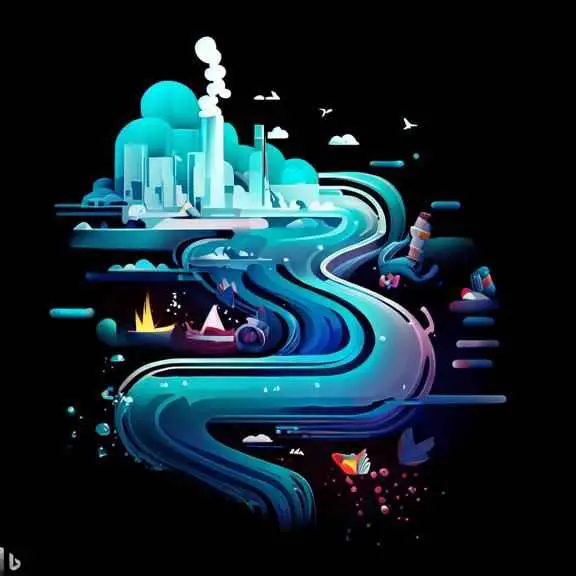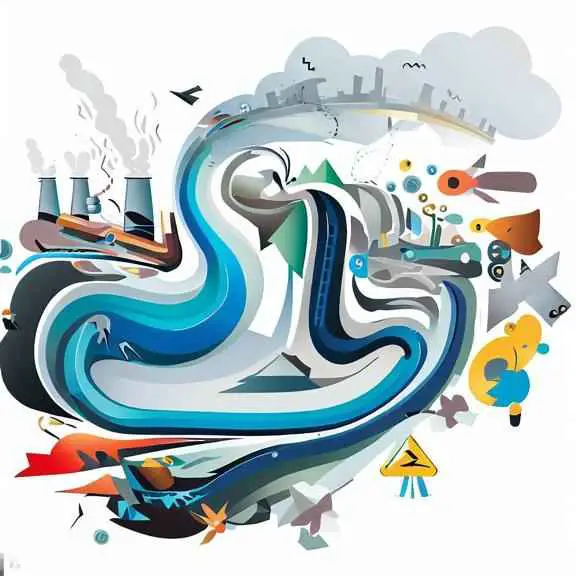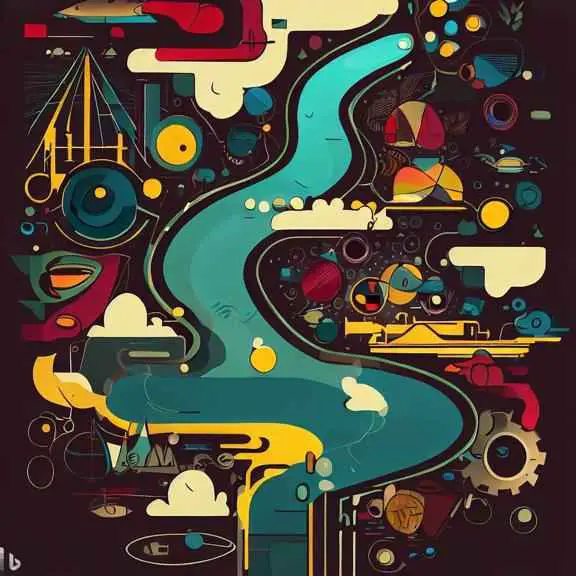Paragraph on
River Pollution
for all Class, Words
by Environment on
The pollution of rivers is a major concern worldwide, affecting not only aquatic life but also human communities that depend on them. The…, please continue reading.

Table of Content
Ad
The Paragraph on River Pollution
Ad

Questions about River Pollution
Ad
The pollution of rivers is a major concern worldwide, affecting not only aquatic life but also human communities that depend on them. The main sources of river pollution include agricultural practices, industrial discharges, sewage treatment plants, and improper disposal of waste. Chemicals and fertilizers used in farming can contaminate rivers through runoff or leaching into groundwater, while industrial discharges from factories and mines can release toxic substances that pose a serious threat to the health of humans and animals. Additionally, sewage treatment plants often do not remove all pollutants, and untreated sewage finds its way into rivers, leading to the growth of harmful bacteria and algae that can disrupt aquatic ecosystems.
One of the most dangerous effects of river pollution is the contamination of drinking water. Rivers are an important source of drinking water for many communities around the world, and pollution can lead to the spread of diseases like cholera and dysentery. Additionally, chemicals like mercury and lead, which can be found in industrial discharges, can accumulate in fish and seafood, making them unsafe for consumption.
Governments and environmental organizations around the world are working to reduce the amount of pollution in rivers through education, outreach, and regulation. Many countries have implemented laws to limit the amount of pollutants that companies can discharge into rivers, while others have set up programs to educate farmers on sustainable agricultural practices. Additionally, technology has played a role in reducing river pollution. For example, some sewage treatment plants now use advanced filtration systems to remove more pollutants.
It is important for individuals to do their part as well, by properly disposing of waste and avoiding the use of chemical fertilizers and pesticides. Many communities have organized river clean-up events to remove trash and debris from the water, but preventing pollution in the first place is the best solution.
- What are the main sources of river pollution?
- The main sources of river pollution include agricultural practices, industrial discharges, sewage treatment plants, and improper disposal of waste.
- What is the most dangerous effect of river pollution?
- The contamination of drinking water is the most dangerous effect of river pollution.
- What diseases can be spread by drinking contaminated water?
- Diseases like cholera and dysentery can be spread by drinking contaminated water.
- What chemicals can accumulate in fish and seafood due to industrial discharges?
- Chemicals like mercury and lead can accumulate in fish and seafood due to industrial discharges.
- What is one way that technology has helped reduce river pollution?
- Some sewage treatment plants now use advanced filtration systems to remove more pollutants.
- What can individuals do to prevent river pollution?
- Individuals can properly dispose of waste and avoid the use of chemical fertilizers and pesticides.
- What are some programs that have been implemented to reduce river pollution?
- Some countries have set up programs to educate farmers on sustainable agricultural practices.
- What is the best solution for reducing river pollution?
- Preventing pollution in the first place is the best solution.
- What is the role of governments and environmental organizations in reducing river pollution?
- Governments and environmental organizations are working to reduce the amount of pollution in rivers through education, outreach, and regulation.
- What are some examples of harmful bacteria and algae that can disrupt aquatic ecosystems?
- Harmful bacteria and algae can cause problems like blue-green algae blooms and toxic algae blooms.

Vocabulary related to River Pollution
Ad
Vocabulary words related to the topic:
- Contamination - the presence of harmful substances in something
Usage: The river’s contamination was so severe that the water could no longer be used for drinking.
- Aquatic - relating to water
Usage: The aquatic ecosystem in the river was heavily impacted by pollution.
- Runoff - water that flows over the ground surface
Usage: The fertilizer from the farm caused runoff, which contaminated the river.
- Industrial discharges - emissions from factories, mines, or other industrial sites
Usage: The industrial discharges from the factory polluted the river and harmed aquatic life.
- Sewage treatment plants - facilities that treat wastewater from homes and businesses
Usage: The sewage treatment plant failed to remove many pollutants, resulting in the contamination of the river.
- Cholera - a waterborne disease that causes severe diarrhea and vomiting
Usage: The contamination of the river led to an outbreak of cholera in the community.
- Dysentery - a bacterial infection that causes severe diarrhea and fever
Usage: The contaminated water in the river caused an outbreak of dysentery.
- Sustainable - able to be maintained at a certain rate or level
Usage: Farmers should adopt sustainable practices to reduce the impact of their activities on the river.
- Debris - scattered fragments, typically of something wrecked or destroyed
Usage: The clean-up crew removed debris from the river, including plastic bottles and other trash.
- Filtration - the process of removing impurities or unwanted material from a fluid
Usage: The advanced filtration system at the sewage treatment plant helped remove more pollutants from the water.
Synonyms and antonyms of vocabulary words:
- Contamination
Synonyms: pollution, adulteration Antonyms: purification, cleanliness
- Aquatic
Synonyms: marine, water-based Antonyms: terrestrial, land-based
- Runoff
Synonyms: drainage, discharge Antonyms: retention, accumulation
- Industrial discharges
Synonyms: emissions, waste products Antonyms: purification, cleanliness
- Sewage treatment plants
Synonyms: wastewater treatment facilities Antonyms: clean water facilities
- Cholera
Synonyms: diarrhea, dysentery Antonyms: health, wellness
- Dysentery
Synonyms: infection, sickness Antonyms: health, wellness
- Sustainable
Synonyms: renewable, eco-friendly Antonyms: unsustainable, harmful
- Debris
Synonyms: rubbish, trash Antonyms: cleanliness, tidiness
- Filtration
Synonyms: purification, separation Antonyms: pollution, contamination

Structure of the sample "River Pollution" paragraph
Ad
Cohesion and coherence: The paragraph begins with an introduction that provides an overview of the topic of river pollution and its main sources. The second paragraph focuses on the dangerous effects of river pollution, particularly on the contamination of drinking water. The third paragraph discusses the various efforts being made by governments and environmental organizations to reduce river pollution. The fourth paragraph focuses on individual actions that can help prevent river pollution. The paragraph ends with a conclusion that summarizes the main points and emphasizes the importance of preventing pollution. The paragraph is well-organized and cohesive, with each sentence and paragraph building on the previous one in a logical and coherent manner. The use of transition words and phrases like “additionally” and “however” helps to signal shifts in focus and maintain coherence throughout the paragraph.
